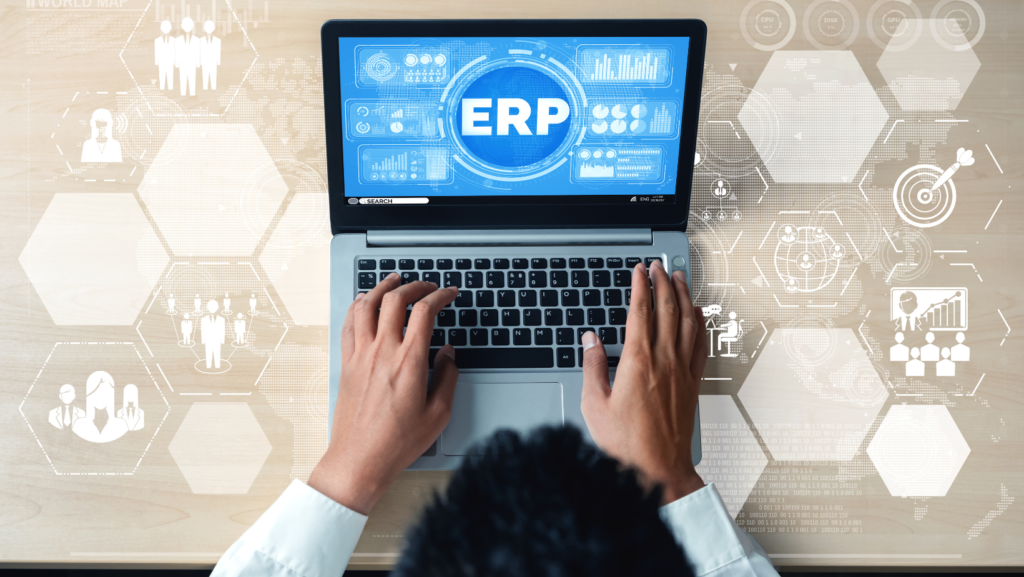By Daniel Timoldi
Many businesses understand the importance of an enterprise resource planning (ERP) system when it comes to enhancing the quality of their processes, but few understand how to properly evaluate its quality once implemented. ERP System evaluation requires considerations from many areas of the business. While some of these considerations may not apply to smaller businesses, a company of any size will benefit from a proper ERP System.
Functionality
An ERP system aims to streamline business operations, enhance productivity, improve collaboration, optimize resources, and provide a holistic view of the organization’s data and processes. It eliminates data silos, improves decision-making, and supports the growth and efficiency of the business. With all this into consideration, it’s important to evaluate the functionality of the system against real-world situations that the company encounters, and is likely to encounter, over the product’s lifecycle.
First, you must lay out all steps and processes involved within your organization. Once that has been completed, the ERP System should be tested to see if it is successfully encompassing all areas of the business. If gaps or limitations are identified, this system should not be used.
While many ERP systems will come close to fitting your wants and needs, they still may not be the right fit for your organization because they are not optimized to meet your requirements. For instance, a work order attached to an invoice may seem like an improvement because it is “in” the system; however, that also means none of the data on the work order can be viewed in reports and used to optimize resources.
If this applies to information that will never be used, then the system is functional. If the information is needed, then the system will need to be modified with custom fields to capture the data for later reporting. If it cannot be modified optimally, it is not a good fit and the software should not be used.
Successfully implementing an ERP is the ROI, which is directly tied to functionality, reporting, and ease of use of the functions. Any data not captured now reduces potential ROI and may create additional work.
Industry-Specific Solution
Different manufacturing industries have unique processes and requirements, so it’s essential to choose a solution that understands and addresses those needs. Manufacturing involves sensitive data, such as intellectual property, customer information, and financial data. Ensure that the ERP system has robust security measures in place to protect your data from unauthorized access, breaches, or loss.
Odoo and NetSuite are both used heavily in all types of manufacturing because they can be customized for industry specific requirements. No matter the choice, it is imperative to be sure that it handles your processes and specific requirements in the end. So, capturing all the processes in scope and verifying that they are implemented is a key aspect of a successful implementation.
Scalability
As a manufacturer, you may have plans for growth and expansion in the future. Ensure that the ERP system can accommodate increasing production volumes, additional users, and new manufacturing facilities without significant disruption.
Integration Capabilities
Assess the ERP system’s integration capabilities with other systems and technologies already in use within your organization. It should be able to integrate with your existing software, such as customer relationship management (CRM) systems, production equipment, data acquisition systems or other manufacturing software, to streamline data flow and avoid duplication of efforts.
Mobile Access
Mobile accessibility allows employees to access critical information, such as inventory levels or production status, from anywhere, facilitating better decision-making and collaboration. Using a cloud-based ERP will aid in accessibility.
User-friendliness
Evaluate the ERP system’s user interface and overall usability. A user-friendly interface reduces the learning curve for employees and improves adoption rates, leading to higher productivity and efficiency. If the interface is complicated, the users will make mistakes and grow to dislike the software which will degrade effectiveness and reduce productivity over time. Observing and asking users who use the system can help when assessing ease of use. These opinions are subjective and need to be viewed collectively to arrive at considerations. Try to discard idiosyncratic answers because the system will be used by a wide variety of people.
Total Cost of Ownership
Evaluate the total cost of ownership, including upfront costs (software licenses, implementation, and training) as well as ongoing expenses (maintenance, upgrades, and support). Consider the return on investment (ROI) and long-term benefits the ERP system can bring to your manufacturing operations.
Customization and Flexibility
Finally, choose an ERP system that is highly customizable so it can be set up to align with your manufacturing requirements. For this reason, it is important that someone within the organization such as a Business Analyst or similar act to advocate for the business’ use of the ERP.
There are so many moving parts when it comes to properly managing a manufacturing company. MTEC is driven to find ways to simplify your processes and help your business thrive. To learn more about what was discussed in this article, or to find out how MTEC can help you evaluate your own ERP, reach out to MTEC’s Business Development Specialist, Charles A. Walywn III, by phone at (845) 391-0183 or via email at charles.walwyn@hvtdc.org.
